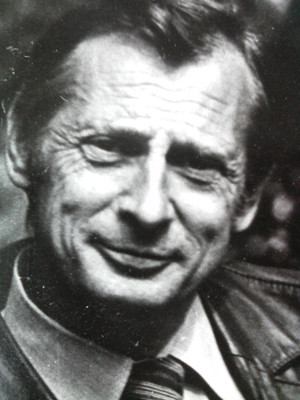 Boris Adolfovich Dubinsky. (Photo courtesy of the Dubinsky family.)
Boris Adolfovich Dubinsky. (Photo courtesy of the Dubinsky family.)
Boris Adolfovich Dubinsky
Contributed by Rustam Dagkesamansky
Boris Adolfovich Dubinsky was born on May 2, 1929 in the Poltava region (now Ukraine), and died in Moscow on October 10, 2019. His father, Adolf Kharitonovich Dubinsky, worked as a press worker, and he went missing at the front during World War II in 1942. His mother, Maria Fyodorovna Prokopenko, worked as a nurse, and later as a doctor. She died in 1945 in Moscow.
After leaving high school in 1948, Boris Dubinsky started his study at the Moscow Power Engineering Institute in the Faculty of Radio Engineering, from which he graduated in 1953 with honors. From 1956 to 1959 he was a post-graduate student at the Institute of Radio Engineering and Electronics of the Academy of Sciences of the USSR (now named the V.A. Kotel'nikov Institute of Radio Engineering and Electronics). He defended his PhD Thesis on "Issues of the analysis of the accuracy of trajectory measurements" in 1962. Following graduation, he worked at the IRE for the rest of his life, most recently as a leading researcher. In 1967 he received the Academic title of Senior Researcher in Radio Astronomy from the Presidium of the Soviet Academy of Sciences. From 1964 to 1999 Dr. Dubinsky was the Scientific Secretary of the Council of the USSR Academy of Sciences with responsibility for the complex issue of "Radio astronomy" and, from 1999 to 2017, Scientific Secretary of the Council on Astronomy of the Russian Academy of Sciences. As the Scientific Secretary of these two scientific councils, he carried out a large amount of organizational work to coordinate the activities of the country's astronomical institutions in USSR, and later in Russia.
Dr. Dubinsky's first scientific work was devoted to the problem of measuring the parameters of the trajectories of ballistic missiles and artificial Earth satellites. From 1961 to 64, he participated in radar research of Venus, Mercury, Mars and Jupiter, including the refinement of the magnitude of the Astronomical Unit (A.U.) by Venus radar measurements. In the late 1960s - early 1970s B.A. Dubinsky took part in the creation of the RATAN-600 radio telescope.
From 1970 onwards, he was an active member of the International Telecommunication Union (ITU) and dealt with the problems of protecting radio astronomy observations from interference caused by radio communications. He proposed and developed the concept of Priority of the Radio Astronomy Service in the shielded zone of the Moon, which in 1979 was included in the ITU Regulation. In 2013, he initiated the adoption of an ITU Recommendation that established a "radio quiet" zone in the vicinity of the L2 libration point of the Earth-Moon system.
Boris Dubinsky was a Member of the International Astronomical Union and Honorary Member of the International Space Coordination Group (IACG). Most Soviet radio astronomers, as well as many Russian astronomers will remember him as the very innovative and clever scientific assistant of the two great scientists - V.A. Kotel'nikov (before 2000) and N.S. Kardashev (up to 2017).
![[IAU logo]](iau_wb_thumb.jpg)
![[URSI logo]](URSI-logo-thumb.jpg)
![[Karl Jansky at his antenna]](jansky_photo_02_thumb.jpg)
![[Reber's Wheaton antenna]](Reber_Telescope_Wheaton_thumb.jpg)
![[Dover Heights]](Dover_Heights_02_thumb.jpg)
![[4C telescope]](GB61-195_4C_telescope_thumb.jpg)
![[Ewen and horn antenna]](ewen_horn1s.jpg)
![[Dwingeloo, 1956]](Dwingeloo-1956-thumb.jpg)
![[Jocelyn Bell Burnell and Cambridge antenna used in pulsar discovery]](burnell2_thumb.jpg)
![[Lovell Telescope at Jodrell Bank]](site_1594_0001-500-334-20180316163019-thumb150.jpg)
![[Wilson, Penzias, and Bell Labs horn antenna]](wilson-penzias-horn_thumb.jpg)
![[6-m Millimeter Radio Telescope in Mitaka, Japan]](6m-thumb.jpg)

